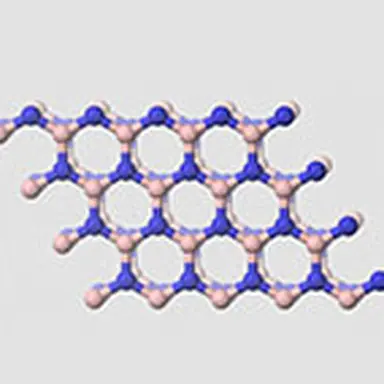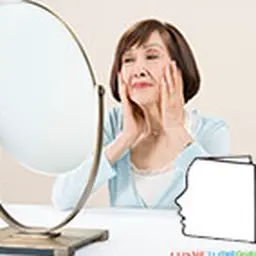
In addition to the traditional uses of boron-derived compounds, new substances have gained renewed interest in recent years in the formulation of many cosmetic products. These are mainly so-called"modern ceramics", or at least some of the compounds used to make these specialities, and more specifically boron nitride, or more specifically boron nitrides.
Boron nitride is a chemical compound of boron and nitrogen, of the crude chemical formula BN (equal number of atoms of each element). Boron nitride is iso electronic with carbon and, like carbon, exists in several polymorphic forms, one of which is similar to diamond and the other to graphite. The diamond shape is one of the hardest materials known and the graphite shape is a popular lubricant.
White hexagonal boron nitride, commonly referred to as h-BN, is used for its tribological and thermal properties. In the foundry sector, this product is generally used to coat dies. Its resistance to thermal shock and high temperatures makes it an ideal material. Initially intended for use in the aerospace industry, it is currently used in industry for the manufacture of crucibles.
It is manufactured, among others, by Saint-Gobain Advanced Céramies, initially known as Carborundum Corporation, which gives an idea of the company's primary objectives.
It was the chemist W.H. Balmain who, in 1842, first synthesized boron nitride by heating a mixture of boron oxide and mercury cyanide. Since then, better manufacturing processes have been developed, such as heating a mixture of sodium borate (borax) and ammonium chloride.
Boron mimine is a three-dimensional building with alternately chemically bonded boron and nitrogen atoms; it can exist in two forms reminiscent of pure carbon. In graphite, each carbon atom is bonded to three other carbon atoms in the same plane, forming honeycomb lamellae that can stack relative to each other. These lamellae can easily slide over each other, giving graphite its lubricating property. Boron nitride has the same properties.
It is used in many cosmetic products. It is white and in powder form, it gives a sensation of softness as well as a more or less pearly shine. It is incorporated in make-up bases, lipsticks and nail polishes. Traditionally, this pearlescent effect was obtained using bismuth oxychloride. It is also used in make-up bases to mask wrinkles thanks to its soft focus effect.
Cosmetic boron nitrides
What are these famous"white powders" that cosmetic formulators love? Why are they so addictive when you start touching them? How can they help to improve the sensoriality, even the sensuality of a cosmetic product? Which quality to choose for which application?
Here are some questions that beauty technicians have been asking themselves since the appearance and marketing of cosmetic grade boron nitride powders.
But first let's talk about the cosmetic quality of boron nitride. In space, the association of BN molecules can take two forms:
- BN hexagonal = honeycomb slats that can stack one on top of the other.

- BN cubic = three-dimensional tetrahedral structures

These two shapes have different properties, namely the hexagonal shape allows the sliding of the sheets, which gives it a lubricating capacity. While the cubic shape is very rigid, which gives it great hardness.
The BN cosmetic is hexagonal in shape and comes in the form of white powder with a very lubricating but non-greasy touch. Moreover, it is a material which is very resistant, inert and non-toxic and does not present any danger… neither for the consumer, nor for the formulator which must guarantee the stability of its product. It is for all these reasons that the popularity of BN is rising to the point of replacing more and more good old talc in cosmetic formulations.
The manufacturers of cosmetic raw materials have understood this well and present to date several ranges of different qualities, thus bringing many cosmetic properties to the BN : - Soft and silky touch - Slippery touch improves the spreading of the product on the skin - Light reflector for a soft focus effect - Opacity, transparency, pearly luster or even glitter depending on the crystal form - Sebum absorber - Mattifying effect - Good compaction agent - High adhesion to the skin for high hold or even non-transfer effect - High chemical stability, unaffected by pH
These powders are thus used as well for care products as make-up products and in all types of cosmetic formulations; emulsions, anhydrous casts, compact powders, even lotions where they bring several properties quoted.
The particle size of these powders can vary from 0.5 to 50 microns. The small crystals (5 to 15 microns) have a very low coefficient of friction and generally provide the silkiest and softest touch. The large crystals (50 microns) give a shiny and sparkling effect without whitening, while keeping a good adherence on the skin.
These powders can also be treated, by silicones for example, to have a better compatibility in silicone formulations, but also to have a greater hydrophobicity. But they can also be used as a treatment agent for other fillers such as pigments to improve glide and spreading as well as skin hold.
These powders also appear in solar compositions in combination with sun filters and silicones to improve their stability, silky feel and soft focus effect.
Their use is increasingly important in the current cosmetics industry and their percentage of use in formulas can vary from 1 to 30% depending on the price per kg of the quality chosen.
From a marketing point of view, they are also interesting for story telling because they belong to the ceramic family.
Today's major manufacturers are: - Saint-Gobain Advanced Ceramics markets the TRÈS BN® Cosmetic Powder Grade range; - Momentive Performance Materials marketing the Boron Nitride Softouch* range; - Merck KGaA in association with EMD Chemicals Inc. marketing the RonaFlair® Boroneige® range. One will notice the very judicious choice of the commercial names of all these ranges !!!
Examples of recent formulas using boron nitride
Face Powder TALC, ISOSTEARYL PALMITATE, SILICA, CALCIUM SILICATE BORON NITRIDE METHICONE, TRIMETHYLSILOXYSILICATE, PHENYL TRIMETHICONE-POLYMETHYLSILSESQUIOXANE, METHYL METHACRYLATE CROSSPOLYMER, CAPRYLYL GLYCOL, ADIPIC ACID/NEOPENTYL GLYCOL CROSSPOLYMER, POLYPROPYLENE, HEXYLENE GLYCOL, PHENOXYETHANOL, IRON OXIDES (CI 77491, CI 77492, CI 77499), MICA, CHROMIUM OXIDE GREENS (CI 77288)-CHROMIUM HYDROXIDE GREEN (CI 77289), CARMINE (CI 75470), BISMUTH OXYCHLORIDE (CI 77163), TITANIUM DIOXIDE (CI 77891).
Face Care Cream AQUA (WATER) - ALCOHOL - GLYCERIN - PROPANEDIOL - DIMETHICONE TRIETHYLHEXANOIN - CAMELLIA KISSI SEED OIL - BUTYLENE GLYCOL - CETEARYL ALCOHOL - METHYL METHACRYLATE CROSSPOLYMER - IPOMOEA BATATAS ROOT EXTRACT - BUTYROSPERMUM PARKII (SHEA) BUTTER - AMMONIUM ACRYLOYLDIMETHYLTAURATE/VP COPOLYMER - DIPROPYLENE GLYCOL - PHENOXYETHANOL - DIPROPYLENE GLYCOL BORON NITRIDE - GLYCERYL STEARATE - PEG-100 STEARATE - TOCOPHERYL ACETATE - PERFUME (FRAGRANCE) - DIMETHICONE CROSSPOLYMER - CAPRYLYL GLYCOL - SORBITAN LAURATE - XANTHAN GUM - PROPYLENE GLYCOL - HYDROLYZED SILK - SODIUM HYALURONATE - HYDROXYETHYLCELLULOSE - ACETYL DIPEPTIDE-1 CETYL ESTER - PHYTIC ACID - SODIUM BENZOATE - SODIUM CITRATE - HYDROCHLORIC ACID - CITRIC ACID - TOCOPHEROL - PALMITOYL OLIGOPEPTIDE - CI 14700 (RED 4) - CI 19140 (YELLOW 5).
BB Cream AQUA/WATER - ISODODECANE - CYCLOPENTASILOXANE - GLYCERIN - CYCLOHEXASILOXANE - PEG-10DIMETHICONE - METHYL METHACRYLATE CROSSPOLYMER - BUTYLENE GLYCOL - DIMETHICONE ISOEICOSANE - DISTEARDIMONIUM HECTORITE - BORON NITRIDE - PHENOXYETHANOL - CETYL PEG/PPG-10/1 DIMETHICONE - SODIUM CHLORIDE - POLYGLYCERYL-4 ISOSTEARATE - HEXYL LAURATE - ACRYLATES/AMMONIUM METHACRYLATE COPOLYMER - ISOSTEARYL NEOPENTANOATE - CAPRYLYL GLYCOL - TRIETHYL CITRATE -METHYLPARABEN - C9-15 FLUOROALCOHOL PHOSPHATES/C9-15 FLUOROALCOHOL PHOSPHATE - TOCOPHEROL - PANTHENOL - CI 77891/TITANIUM DIOXIDE - CI 77491, CI 77492, CI 77499/IRON OXIDES.
Lipstick DIISOSTEARYL MALATE - OCTYLDODECANOL - SUCROSE TETRASTEARATE TRIACETATE - HYDROGENATED POLYISOBUTENE - LIMNANTHES ALBA (MEADOWFOAM) SEED OIL - CETYL LACTATE - HYDROGENATED POLYDECENE - MEADOWFOAM DELTA-LACTONE - POLYETHYLENE -CERA ALBA (BEESWAX) - SYNTHETIC WAX - SUCROSE POLYSTEARATE - BORON NITRIDE - LAURYL PCA - PHYTOSTERYL/OCTYLDODECYL LAUROYL GLUTAMATE - CERA MICROCRYSTALLINE WAX - ETHYLENE/PROPYLENE/STYRENE COPOLYMER - DISTEARDIMONIUM HECTORITE - SILICA - TOCOPHERYL ACETATE - PROPYLENE CARBONATE - BUTYLENE/ETHYLENE/STYRENE COPOLYMER - PEG-8 PARFUM (FRAGRANCE) - TOCOPHEROL - TRIETHOXYCAPRYLSILANE - TIN OXIDE - ALUMINA ASCORBYL PALMITATE - BHT - ASCORBIC ACID - CITRIC ACID (+/-)CI 12085 (RED 36) - CI 15850 (RED 6) - CI 15850 (RED 7 LAKE) - CI 15985 (YELLOW 6 LAKE) - CI 17200 (RED 33 LAKE) - CI CI 19140 (YELLOW 5 LAKE) - CI 42090 (BLUE 1 LAKE) - CI 45380 (RED 22 LAKE) - CI 45410 (RED 28 LAKE) - CI 73360 (RED 30 LAKE) - CI 75470 (CARMINE) - CI 77163 (BISMUTH OXYCHLORIDE) - CI 77491, CI 77492, CI 77499 (IRON OXIDES) - CI 77742 (MANGANESE VIOLET) - CI 77891 (TITANIUM DIOXIDE) - MICA.
| This contribution was possible thanks to the active collaboration of Sabine Vic. Sabine is a chemical engineer from ENSC Montpellier. She holds a Masters in Cosmetics (Isipca 1990) and a Masters in Biochemistry from the University of Languedoc. She has held positions of responsibility in the cosmetics industry through several companies, including Biotherm (Formulation), Yves Saint Laurent (Head of Make-up R&D, then Technical Coordination), and Parfums Christian Dior (Head of Galenic Make-up Innovation). She has proven experience in formulation. |










![By Rock Currier (http://www.mindat.org/photo-237295.html) [CC-BY-3.0 (http://creativecommons.org/licenses/by/3.0)], via Wikimedia Commons](https://d2aabgjce9enf.cloudfront.net/main/media/content/5/c/5cf74a4a92ef1b89e0549ec097048f7d3268ec4a--sm-noborder.webp)
![Par Ben Mills (Travail personnel) [Public domain], via Wikimedia Commons](https://d2aabgjce9enf.cloudfront.net/main/media/content/5/b/5b62847bc4229696df593a6b14899855ab56385e--sm-noborder.webp)
![Par Xvazquez (Travail personnel) [CC-BY-SA-3.0 (http://creativecommons.org/licenses/by-sa/3.0) ou GFDL (http://www.gnu.org/copyleft/fdl.html)], via Wikimedia Commons](https://d2aabgjce9enf.cloudfront.net/main/media/content/5/5/55b47c064570b73285696cf00e7203d6ab77a89b--sm-noborder.webp)